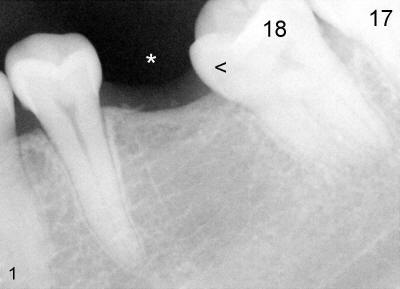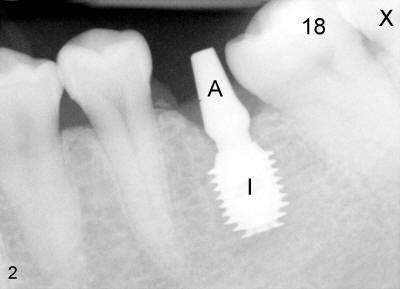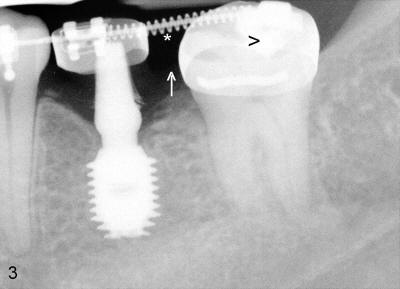



 |
 |
 |
 |
Dental Education Lecture: Implant as Anchorage for Braces
When a back tooth is lost for too long (Fig.1: *), the neighboring tooth (18) is tilted and shifted forward (<). Before replacing the missing tooth, the shifted tooth needs to be placed where it belongs. A mini-implant could be used to accomplish the 2nd mission. A regular-sized implant can do both tasks. A stone kills two bird.
Mini-implant can be used as an anchorage immediately after its placement, whereas regular implant needs several months to heal before it can be used to move the shifted tooth. Fig.2 shows that an abutment (A) is just placed over the healed implant (I). Notice how close the abutment is to the tooth #18. In order to move #18 backward faster, the tooth #17 needs to be extracted (X, as compared to Fig.1).
Four to five months later, due to the constant action of a spring between the implant tooth and the tooth #18 (Fig.3: *), the shifted tooth is moved to its normal position (black arrowhead: >). Surprisingly, the bone next to the tooth has grown upward (white arrow, compare with Fig.1,2). These two changes are beneficial to the health of the tooth #18 .
Fig.4 shows the implant supported tooth (#19) and the tooth #18. Everything looks good except that the tongue side of #18 needs to be lifted a little bit (arrow).
Xin Wei, DDS, PhD, MS 1st edition 03/27/2011, last revision 12/24/2016